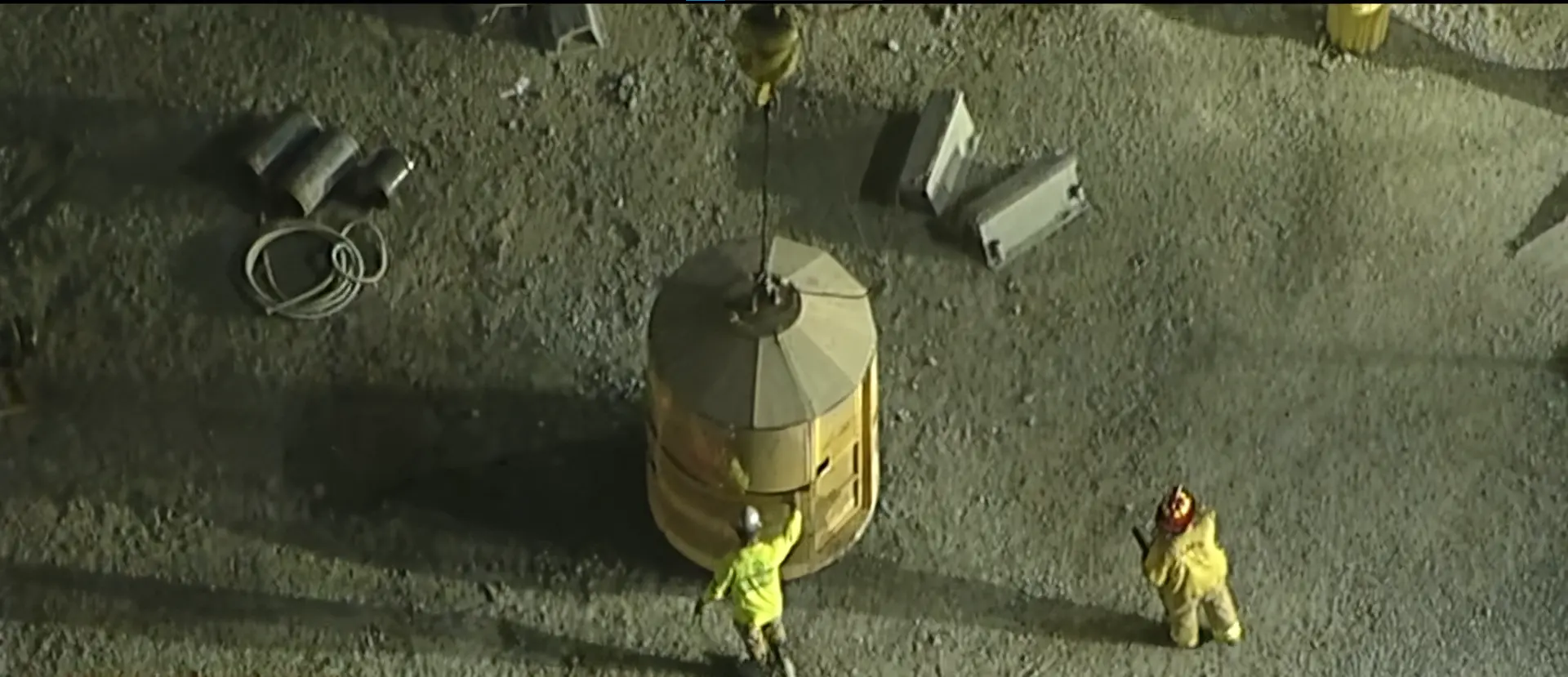A partial tunnel collapse in Wilmington, Los Angeles, triggered a large-scale rescue operation late Wednesday night. Thirty-one tunnel workers were caught in the collapse but were eventually rescued unharmed following an intense emergency response.
What Happened at The Tunnel Collapse in Wilmington?
At approximately 8 p.m., construction workers were inside an 18-foot-diameter municipal wastewater tunnel—part of the Clearwater Project—when a section of the tunnel lining failed, reportedly about five to six miles from the entry point on North Figueroa Street in Wilmington. Falling debris created a mound up to 15 feet tall, blocking the tunnel and trapping workers underground.
Rescue Efforts
Within minutes, over 100 Los Angeles Fire Department personnel, including Urban Search & Rescue teams and specialized tunnel rescue units, responded to the scene. Mayor Karen Bass and LAFD Interim Chief Ronnie Villanueva were present, coordinating the rescue operation.

Aerial footage captured rescuers lifting workers out using a crane-operated cage system. The trapped workers navigated over unstable debris and were transported to safety via an internal work vehicle in groups . All 31 workers emerged unharmed, though 27 were evaluated by paramedics on the scene .
Who Was Affected and Where?
According to officials, 27 workers were inside when the collapse occurred, and 4 additional entered afterward, possibly to help . The tunnel runs from the A.K. Warren Water Resource Facility toward San Pedro and is part of a larger wastewater initiative scheduled for completion in 2028 .
Mayor Karen Bass shared on X:
“We are all blessed today in Los Angeles, no one injured, everyone safe… Thank you to all of our brave first responders.”
Supervisor Janice Hahn, Councilmember Tim McOsker, and Congresswoman Nanette Barragán visited the site to assess the situation and support the rescued workers.
The prime contractor, Flatiron Dragados, halted work immediately to investigate. Engineers will examine the collapsed area and the tunnel canal to determine cause and develop a remediation plan.
Ferrante, Chief Engineer of the LA County Sanitation Districts, said:
“We have to ensure the tunnel is safe. There’s no telling how long that will take.”
What Caused the Collapse?
Preliminary investigations indicated that the collapse resulted from a structural failure of the tunnel lining approximately five to six miles from the entry point. The 18-foot diameter tunnel had been under construction for the Clearwater Project, a $630.5 million initiative aimed at modernizing the region’s wastewater infrastructure. The project is expected to extend over seven miles and reach depths of up to 450 feet underground.
The soil pressures seems to have exceeded the support capacity. Engineers from the L.A. County Sanitation District confirmed the failure occurred five to six miles underground at a horizontal excavation site.
Construction has paused until a detailed inspection can determine the failure’s cause and outline safe repair steps.
This incident spotlights the substantial risks of large-scale tunnel construction—from geotechnical pressures to structural support failures. As urban projects expand, stringent safety standards, continuous monitoring, and rapid response protocols are essential .
The Wilmington tunnel collapse turned perilous quickly, but thanks to skilled rescue teams and the courage of the workers, disaster was averted. As the Clearwater Project pauses to investigate and reinforce, the focus will remain on integrity, safety, and restoring community confidence before moving forward.
Stakeholders will continue updating the public as investigations proceed—ensuring this near-tragedy leads to stronger procedures, not repetition.


